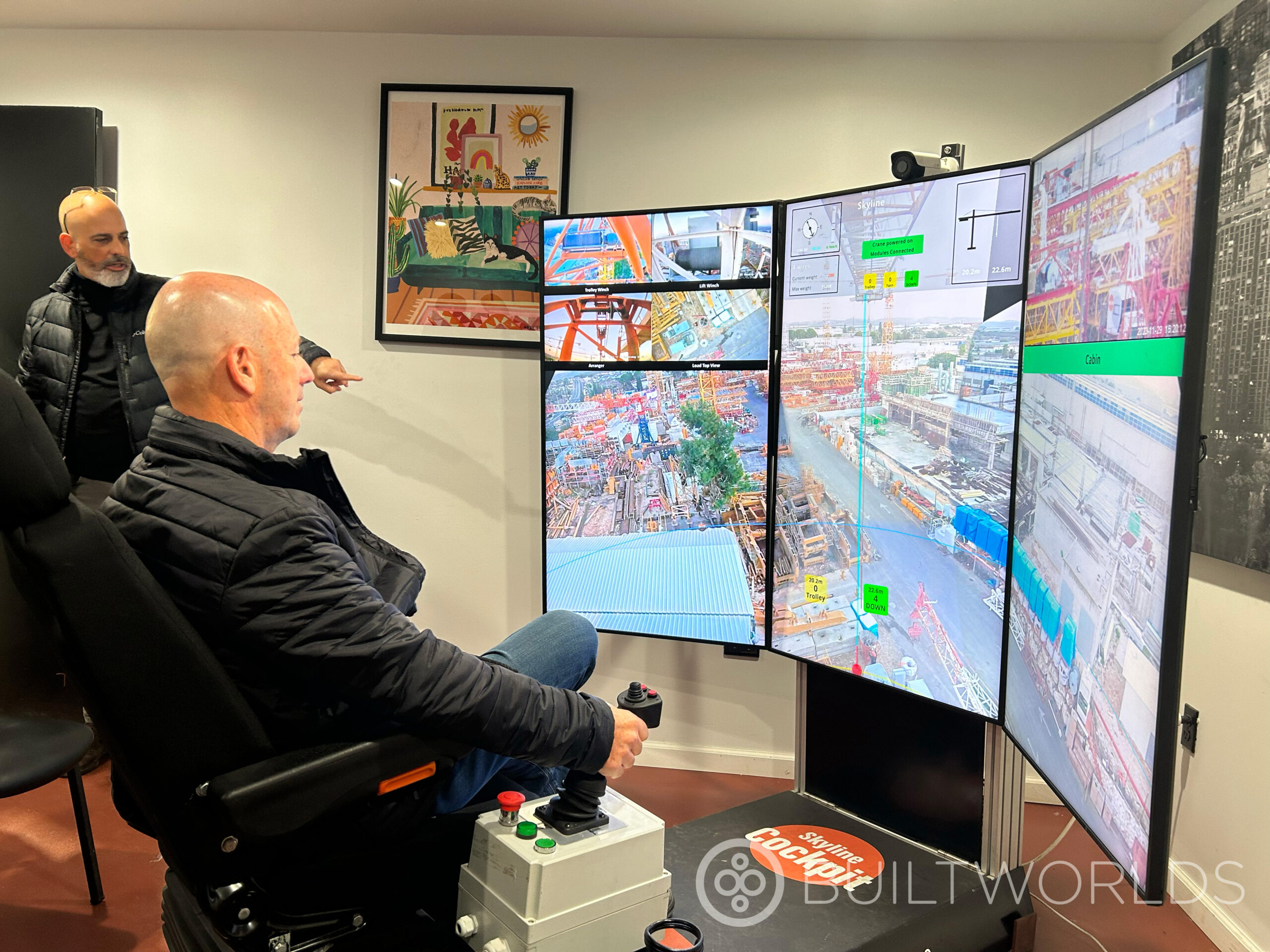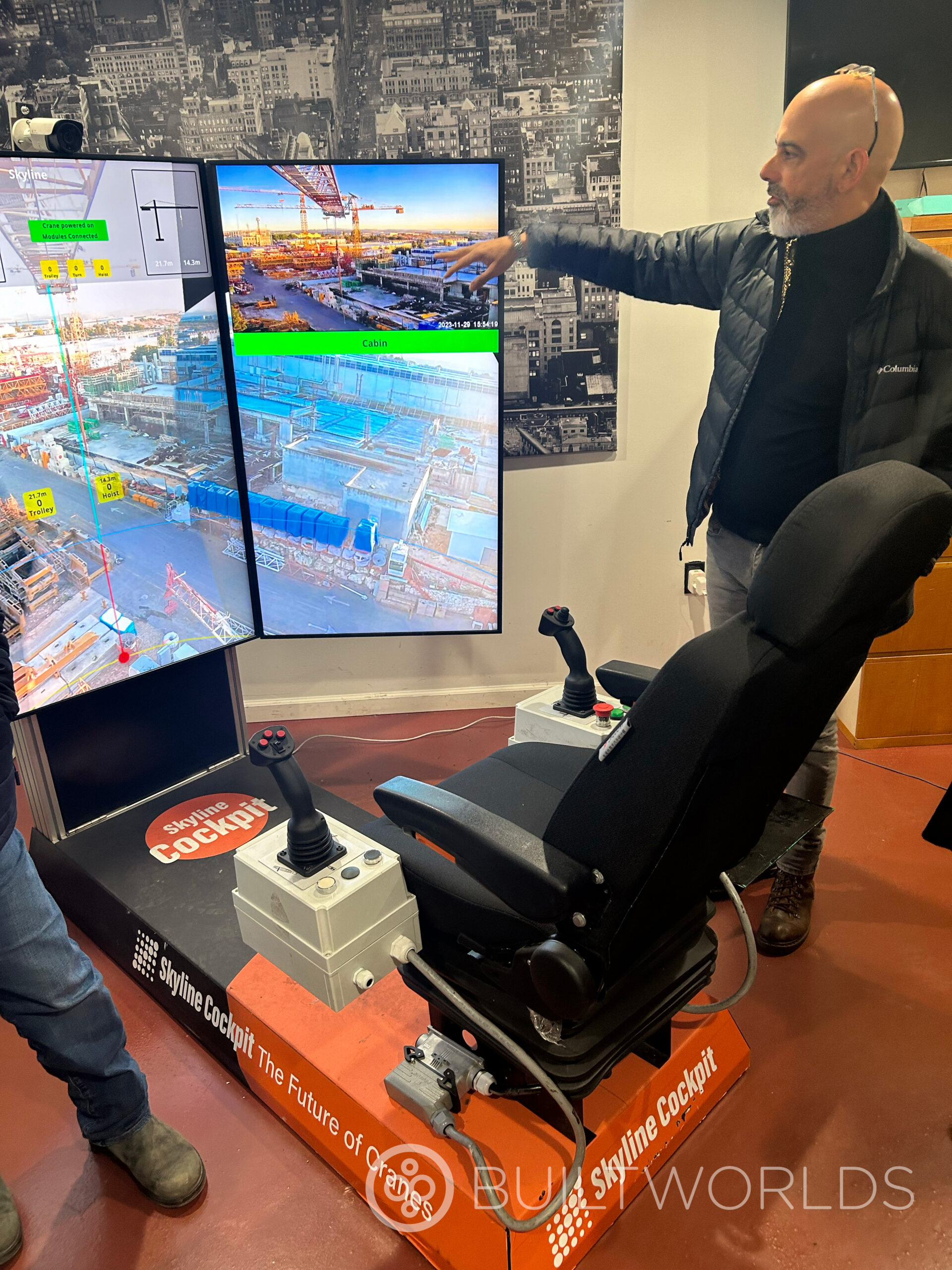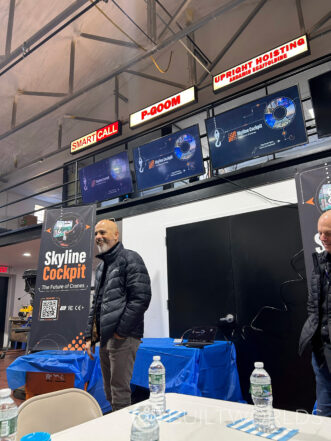The construction industry currently is and historically has been notably slow to move, especially when it comes to adopting innovative technology. However, some technologies like robotics and other advanced equipment, which were once seen as provocative, are accumulating use cases and efficacy studies that are helping to lessen apprehensions. So, despite legacy solutions and manufacturers not feeling pressure to constantly evolve their products, when it comes to things like safety and efficiency, many construction tech startups see an opportunity to seize market share and fill the gap in the face of lagging original equipment manufacturers (OEMs).
In December, the BuiltWorlds team traveled to New York to join New York City Real Estate Tech Week (NYCRETW) in partnership with MetaProp. In addition to being a ‘Core Event Holder,’ the week was an opportunity to catalog and read the city's desire to innovate. As such, Skyline Cockpit, an Israeli-based startup carrying the DNA of parent company Skyline Cranes and Technologies, demoed their cutting-edge innovations in crane operations to a room full of investors, innovators, and other AEC personnel. In essence, Skyline Cockpit operates and controls tower cranes remotely from the ground by leveraging their patented guiding system technology for high-rise cranes. Despite being intended for on-site use, the technology enables the operation of cranes miles away, and in the case of this demo, roughly 5,700 miles, from New York to Israel with little-to-no latency.

Without spending too much time dissecting the technical ability, the practical considerations are enough to question whether or not OEMs will need to follow suit. Cockpit’s technology eliminates the need for operators to climb to the cockpit, and replaces hours of looking down with an ergonomic seat, in turn increasing both efficiency and safety.

So what’s the catch? For starters, specific to Skyline Cockpit’s arena, regulation, and licensing concerns are almost certainly the first questions from potential buyers. Does the operator need to be licensed in the location of the crane itself, in the location of the rig, or both? Can you use the technology for certifications and training? These are the types of questions that need answers, and realistically, each municipality likely has differing regulations which limits the ability of the industry to innovate rapidly.

While regulations may slow innovation, startups in the space are key to accelerating change. At the very least, companies like Skyline Cockpit put pressure on governments to consider change, and also press legacy OEMs to innovate in their own right. Beyond remote crane operation technology, many startups intend to challenge the status quo, presumably pressuring OEMs and legacy solution providers to increase their innovation efforts, especially if capital inflows continue/pick up traction in the AECO

Discussion
Be the first to leave a comment.
You must be a member of the BuiltWorlds community to join the discussion.